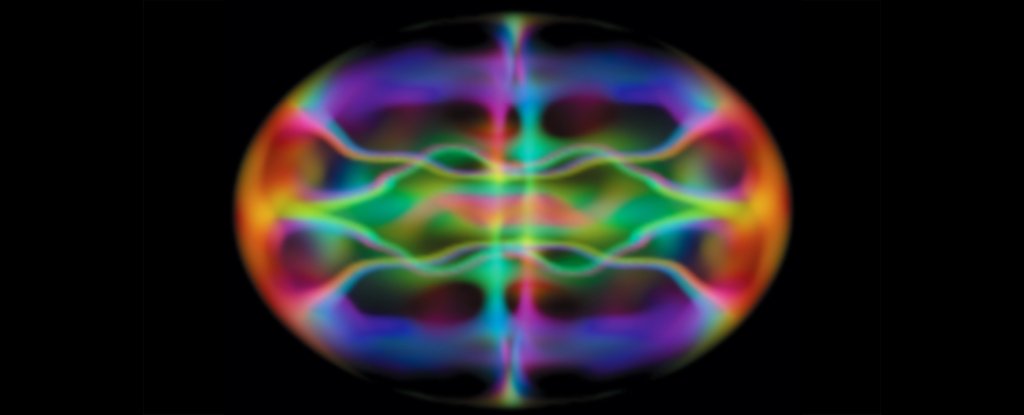Products You May Like
In July of 2018, NASA announced an incredible achievement. They had created the coldest spot in space – right there on the International Space Station, in orbit around Earth.
They took atoms of a soft metal called rubidium, and cooled them to temperatures around 100 nanoKelvin – one ten-millionth of a Kelvin above absolute zero.
This resulted in a super cold cloud called a Bose-Einstein condensate, the exotic ‘fifth’ state of matter, and one that could help us understand the weird quantum properties of ultra-cold atoms. But the research did not stop there.
Using the Jet Propulsion Laboratory’s Cold Atom Laboratory, scientists went on to produce Bose-Einstein condensates less than a nanoKelvin above absolute zero – exploiting the microgravity conditions aboard the space station to learn more about this state than we could on Earth.
Bose-Einstein condensates are pretty weird. They are formed from bosons cooled to just a fraction above absolute zero (but not reaching absolute zero, at which point atoms stop moving). This causes them to sink to their lowest-energy state, moving extremely slowly, and coming together close enough to overlap – producing a high density cloud of atoms that acts like one ‘super atom’ or matter wave.
Because quantum mechanics – in which each particle can be described as a wave – is easier to observe on the atomic scale, Bose-Einstein condensates allow scientists to study quantum behaviour on a much larger scale, instead of trying to study individual atoms.
Bose-Einstein condensates can be created here on Earth, using a combination of laser cooling, magnetic fields, and evaporative cooling. That last technique is the final step – the atoms are held in a magnetic trap, and radio-frequency radiation is used to ‘evaporate’ the most energetic particles, leaving the cold, sluggish ones behind to form the condensate.
Once this occurs, the trap is switched off, and scientists can perform experiments. But they have to act fast – the natural repulsive force between the atoms will cause the cloud to expand and dissipate. Gravity means this process happens pretty fast – just a few tens of milliseconds.
With the effects of gravity counteracted in freefall, though, you can make a Bose-Einstein condensate that can last over a second.
In addition, the reduced impact of gravity means the condensate can form in a shallower dish. This provided the researchers a better window to observe the cloud, both before and briefly after its release.
This is what the researchers achieved with the Cold Atom Laboratory – but when they probed the condensates they produced, they found effects that can’t occur in Earth’s gravity.
“We find that radiofrequency-induced evaporative cooling reveals markedly different results in microgravity,” they write in their paper.
“We observe an on-orbit increase in the atom number of nearly threefold. Through the application of varied magnetic field gradients, we confirm that approximately half of the atoms are in the magnetically insensitive state |2, 0⟩, forming a halo-like cloud around the location of the magnetic trap.”
On Earth, gravity is the dominant force acting on these atoms, removing them from around the trap.
In space, being able to take a closer look at the condensate revealed a halo of loose rubidium atoms hovering around the cloud’s edges. Thanks to the way the material was cooled, these atoms barely paid attention to the magnetic trap.
Gravity would usually pull them aside, at least on Earth. But in freefall, they hung about, providing a potentially useful ultracold resource for future study.
The feasibility of producing colder, longer-lasting Bose-Einstein condensates also means we can start thinking about other ways we can study them. For instance, trap shapes not possible on Earth could be created to see if different quantum behaviours can be observed.
The wave properties of Bose-Einstein condensates are also potentially useful for atom interferometers, which can be used to measure fundamental physical constants.
“We have used the baseline capabilities of CAL in low Earth orbit to demonstrate immediate and fundamental benefits of microgravity for ultracold atom experiments… These experiments form the start of potentially years of science operations, with additional capabilities of the instrument to be employed over time,” the researchers write in their paper.
“Future modular upgrades for the CAL instrument are available for extended mission studies, including a science module built by JPL featuring an atom-wave interferometer. Additionally, payloads for follow-on missions are in proposal and development stages, assuring the continued presence and application of ultracold atoms in orbit.”
The research has been published in Nature.
